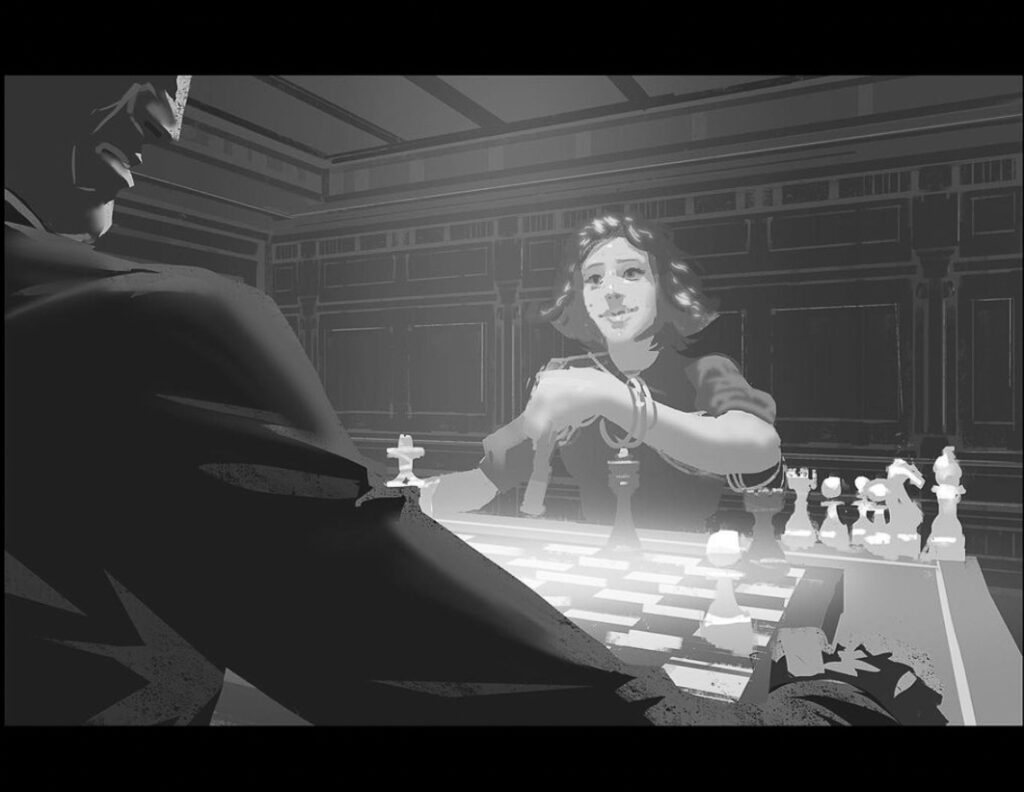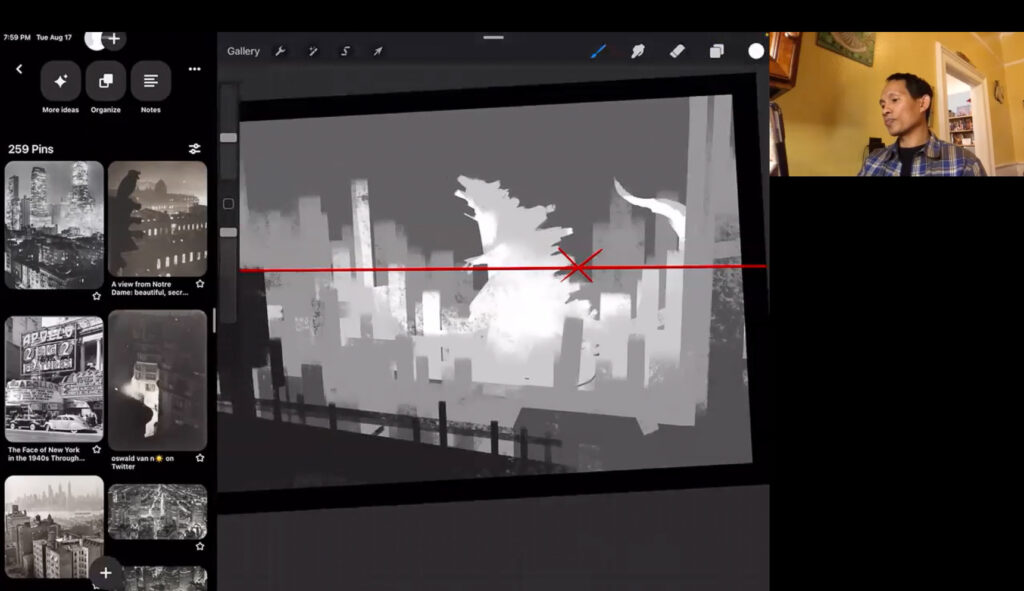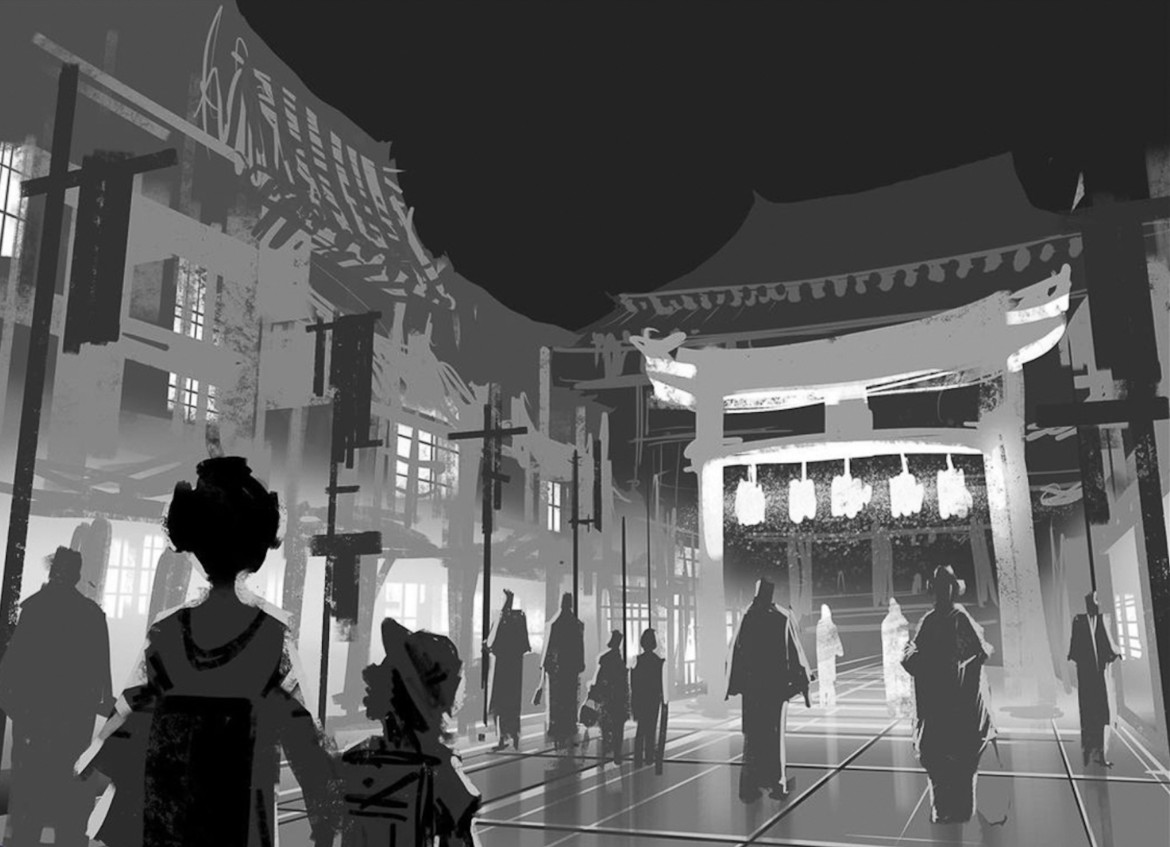By Greta Chiocchetti
When Academy of Art University Foundations instructor Joko Budiono began his recent Noir Digital Painting workshop with a rather ordinary photograph of a corner of his Bay Area apartment, it was unclear how he would transform the scene into a compelling noir painting.
“I’m going to move my iPad just in case my foreground is messy,” he joked, snapping a series of photos from varying angles. “I’m not going to think about the subject matter—I’m just going to set up the composition, the perspective.”
Budiono offered his Zoom audience a choice between three photos with slightly varying points of view. “Just focus on the angles,” he said. “Which one should we work off of?”
In the live chat box, attendees wrote that they preferred the first option—a vertically-flipped view of the room’s far corner, containing a window and a small television. “If you’re worried that this isn’t going to turn out to be anything, don’t worry—it has nothing to do with what’s in the picture or what’s on the wall,” Budiono reassured.

Attendees were expecting to learn how to create images like the dynamic daily perspective paintings from Budiono’s Instagram, ranging from depictions of superheroes soaring above skyscraping city skylines to mobsters doing shady business under cover of night. Regardless of the subject matter, Budiono’s drawings reflect a mastery of a foundational artistic skill: perspective. Though a solid understanding of perspective is required to produce convincing, realistic art, many aspiring artists struggle with the concept.
Luckily for Academy students, their instructor literally wrote the book on it—or rather, two. After graduating from the Academy, Budiono collaborated with Foundations Director Leandro Ng and illustrator Thomas Denmark to write and illustrate the artist’s manual, “Creative Layout: Perspective for Artists.” His follow-up book, “The Thousandth Thumbnail,” explores concept development and composition through a wide variety of thumbnails and studies.
As he guided attendees through Procreate, a digital painting application, Budiono revealed the shortcut he calls “photo alignment.” Using Procreate’s drawing guide, he could map out the photograph’s perspective and create a new world within it—without having to conceptualize the perspective from scratch.
Budiono pointed out the photograph’s vanishing points—the points in illustrated space which are supposed to appear the furthest from the viewer, where parallel lines in an image appear to meet. Dragging the drawing guide grid across the screen, he traced the reference photo’s vanishing points and built out the perspective. Then, he removed the photo and revealed a grid.
“Look at that, guys, you don’t really have to figure out your perspective anymore!” said Budiono. “Just take a photo and use it to guide your composition, and you can create whatever you like.”

Budiono asked attendees to select the subject matter of his demo drawing, and responses poured in—many of which suggested a noir cityscape with Japan as the location. Budiono settled on a noir cityscape featuring the Japanese film icon Godzilla.
Budiono selected the large brush tool and built a building structure that he called his illustration’s “frame.”
“I know the focal point of this illustration is going to be next to that vanishing point, so I’m not making this frame too big,” Budiono explained. Switching from the foreground where he added the frame, Budiono added another layer for the middle ground, which would house his reptilian focal point.
“I’m using the lasso tool here, and I’m outlining the form of Godzilla,” Budiono explained, using a lighter value of grey to contrast with the darker frame color and indicate depth. He added buildings between the frame and Godzilla, using a slightly darker grey value. “You can wait to add in any designs or details until after you’ve got your values.”
Once Budiono was pleased with the values in the frame, he pulled up reference photos from the internet to build out the image’s design, from the surrounding Japanese architecture to Godzilla’s profile.
“See how easy that was?” Budiono said, adding some finishing touches to the scene. “Once you understand this technique, it’s incredibly easy to set up the perspective.”
Watch the full Noir Digital Painting workshop below.
